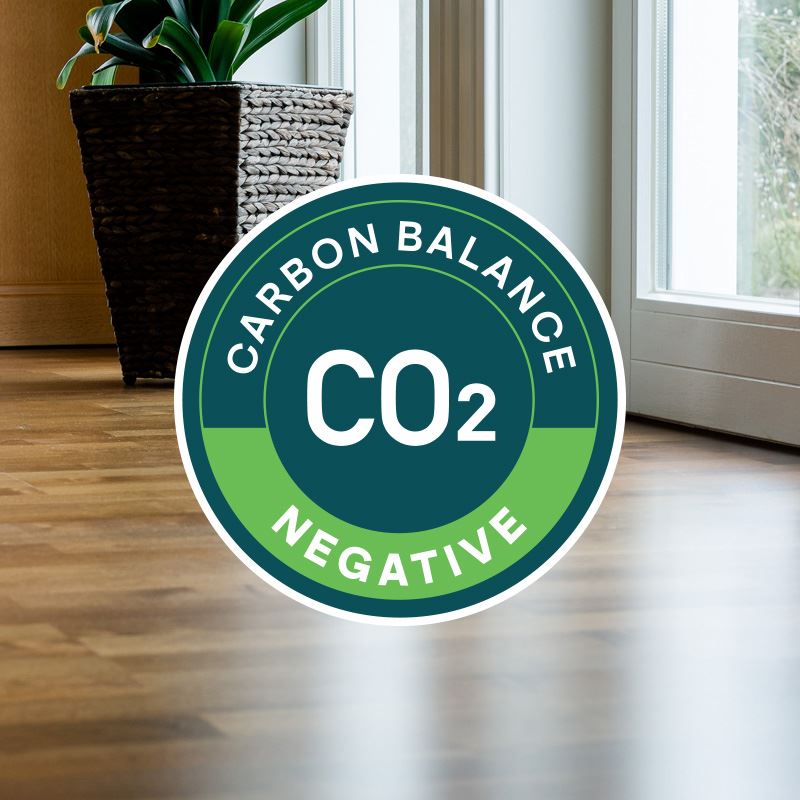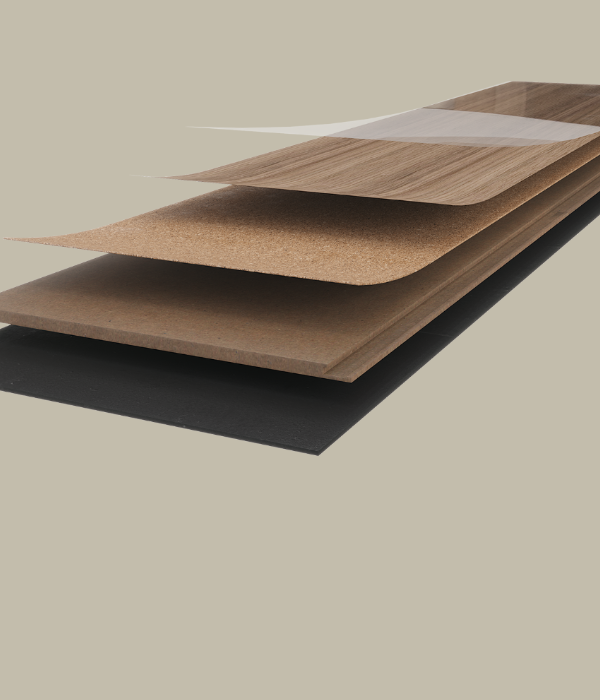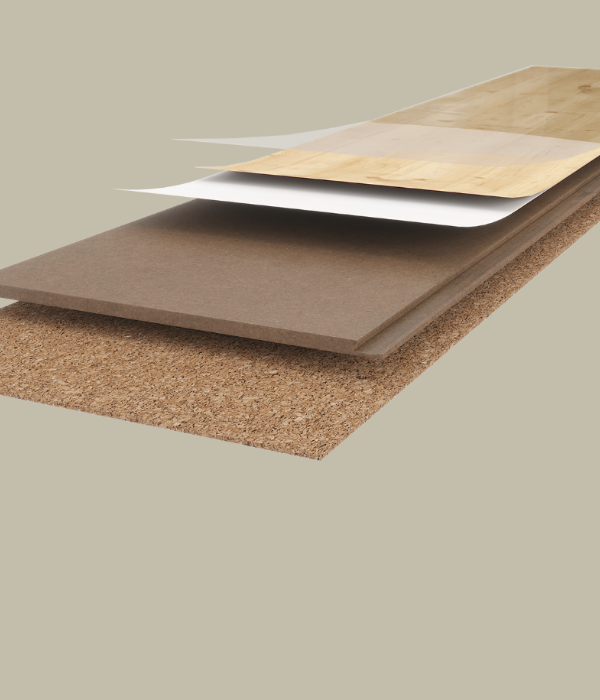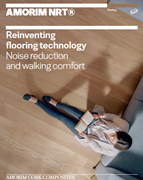Top Layer
High density layers that allow design and walking comfort with reduced thickness
Printable surface that allows the freedom of design
NRT Top Layer is a component of high density cork designed for direct and digital printing that flooring allows for virtually limitless styles and designs to suit the most discerning customer's taste. Its compact and smooth surface allows the printing of a customized design, while contributing to an extraordinary performance on the impact noise attenuation.
-
Top layer NRT 94 with negative carbon balance
Amorim Cork Composites commissioned an independent Carbon Footprint and Life Cycle Assessment study, that aimed to identify the environmental impact of Top Layer NRT 94. The study, which assessed the impacts of forestry management, transport of raw materials and production, concluded that Top Layer NRT 94 has a negative carbon balance of -39,3 kg CO2/ m2 *, when considering the carbon sequestration of the cork oak forest and CO₂ emissions from the industrial process.
*According to EY Top Layer NRT 94 Carbon Footprint Analysis, 2020.

-
Walking comfort, freedom of design, silent and warm thanks to cork
The flooring industry demands freedom of design, silent and warm. With NRT Inside, these requirements will be met. The air pockets in cork store heat, inviting you to go barefoot. Once again the cork closed cell structure is explored for the application benefit. Cork cells are tiny, irregular, pentagonal or hexagonal prisms. The cell height rarely exceeds 50 micrometers. Fifty per cent of cork is an air-like gas enclosed in the cork cells. Suberin makes the cork cell membrane impermeable and the cell airtight. A single cubic centimeter of cork contains almost 40 million cells – around 800 million in a single natural cork stopper.
Because of it, cork has an extraordinary recovering capacity, it is light and compressible without compromising the indentation resistance, it is thermal effective, and it has soft touch and warm feeling.
Key features
“Eight years ago (2009), we were thinking about what we could do better to offer to the end consumer and we found that we should offer something more quiet, comfortable, and warm. In this respect, we could provide these features by including cork in our wood floors.”
-
-
Inlay
Footfall Noise Insulation through a natural and thin layer
-
-
Pre-Attached Underlayment
Impact noise insulation as part of the system
NRT Top Layer - Negative Carbon Balance
Top Layer NRT®94 has a negative carbon balance of -39.3 kg CO₂/m₂*, when taking into account the CO₂ sequestered by cork oak forests and the emissions associated with the industrial process.
Would you like to know more about this subject?
Let us know your details and we'll get back to you.
Technical Specifications
| Units | NRT 94 | Test Method | |
|---|---|---|---|
| Density | (kg/m³) | 450 - 550 (28 - 34 lb/ft3) |
ISO 7322 |
| Compressibility at 0,7MPa | % | < 20 | |
| Recovery at 0,7MPa | % | > 70 | |
| Tensile Strenght | kPa | > 1400 (> 203 psi) |
|
| Availability | - | Rolls & Sheets | - |
| Width (minimum - maximum) | mm | 100 - 2100 (4 - 83 in) |
|
| Length (minimum - maximum) | mm | sheets: 600 - 3000 rolls: 600 (24 in) - equivalent to Ø1200 (47 in) |
|
| Thickness (minimum - maximum) | mm | 0,8 - 8 (0,03 - 0,3 in) |
|
| Finish | - | GR180 |
The data provided in this table represents typical values. This information is not intended to be used as a purchasing specification and does not imply suitability for use in a specific application. Failure to select the proper product may result in either equipments damage or personal injury. Please contact us regarding specific application recommendations. Amorim Cork Composites expressly disclaims all warranties, including any implied warranties or merchantability or of fitness for a particular purpose. Amorim Cork Composites is not liable for any indirect special, incidental, consequential, or punitive damages as a result of using the information listed in this table. Any of its material specification sheets, its products or any future use or re-use of them by any person or entity.
